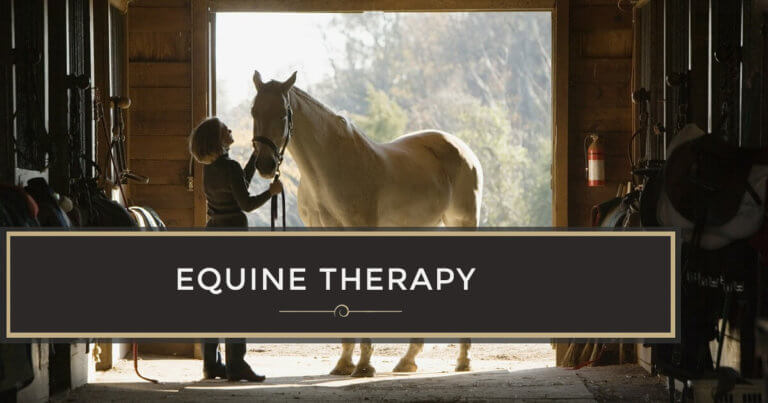Equine therapy programs have emerged as an innovative therapeutic modality that harnesses the unique bond between humans and horses. By engaging with these majestic animals, individuals seeking treatment for various emotional and psychological issues may undergo profound transformations. This form of therapy integrates experiential learning and emotional regulation, promising not just healing but a reevaluation of perspectives toward self and society.
Equine therapy, often referred to as equine-assisted therapy or EAP, taps into the innate qualities exhibited by horses—empathy, sensitivity, and social attunement. These characteristics serve as catalysts for developing emotional intelligence and resilience in participants. The mechanism underlying this therapeutic process involves the nonverbal communication that transpire between humans and horses, revealing deep-seated emotions and fostering authentic relationships.
In exploring equine therapy and its multifaceted benefits, several critical components warrant examination, including its theoretical foundations, practical applications, and the transformative journeys of participants.
Theoretical Foundations of Equine Therapy
At the core of equine therapy lies a confluence of psychological theories that emphasize experiential learning, behavioral modification, and emotional growth. Grounded primarily in cognitive-behavioral therapy (CBT) and humanistic psychology, equine therapy provides a nontraditional, yet profoundly effective avenue for personal development. The interactive dynamics between human and horse encourage participants to confront their anxieties and insecurities while fostering self-awareness.
One of the pivotal theories informing equine therapy is the notion of the “mirror effect.” Horses, as inherently social creatures, reflect the emotional state of the individuals interacting with them. This phenomenon allows participants to observe their behaviors and emotions in real time, facilitating necessary introspection. Moreover, the reactions of horses provide immediate feedback regarding the participant’s demeanor, accentuating the importance of emotional regulation and self-management.
A critical aspect of equine therapy is its focus on the establishment of trust and safety. The reliance on nonverbal cues necessitates participants develop attunement to both their own feelings and those of the horse. This process mirrors interpersonal dynamics in human relationships, creating an environment that encourages vulnerability and connection—two aspects often stifled in traditional therapeutic settings.
Practical Applications of Equine Therapy
Equine therapy programs cater to a diverse range of populations and issues, including but not limited to anxiety, depression, addiction, and trauma-related disorders. The versatility of this therapeutic modality lies in its adaptable nature; it can be tailored to meet the needs of individuals or groups across various age demographics.
For individuals grappling with addiction, equine therapy presents a powerful intervention that encourages emotional healing while addressing the roots of addiction. Engaging with horses helps participants cultivate skills such as impulse control, patience, and emotional regulation. These skills are indispensable not only during the healing process but also in sustaining long-term sobriety. The nurturing environment provided by equine therapy can also help mitigate feelings of shame and stigma often associated with addiction, fostering self-compassion and acceptance.
Similarly, equine therapy shows promise in treating trauma and post-traumatic stress disorder (PTSD). The calming presence of horses can assist individuals in processing traumatic experiences within a safe context, allowing for gradual exposure to painful memories. Such an environment can enable participants to reclaim agency over their experiences, while also encouraging healing through companionship and connection.
Schools and programs focused on children and adolescents have also begun to incorporate equine therapy into their curricula. For young individuals facing emotional or behavioral challenges, the nonjudgmental nature of horses presents an opportunity for connection that might be elusive in traditional educational settings. In this context, equine therapy may serve as an effective adjunct to standard behavioral interventions, enhancing social skills, communication, and emotional expression.
Transformative Journeys in Equine Therapy
As equine therapy continues to gain traction, the personal narratives of participants illuminate the depth of its impact. Many individuals report experiencing heightened self-esteem and improved interpersonal relationships following their engagement with equine therapy programs. The testimonials paint vivid portraits of transformation, highlighting profound shifts in perspective and renewed zest for life.
Equine therapy often culminates in moments of epiphany, where participants undergo significant realizations about themselves and their behaviors. These breakthroughs are frequently accompanied by a newfound appreciation for the nuances of emotional expression and the importance of relationships—both with oneself and others. As participants develop a deeper understanding of their emotional landscapes, they are empowered to forge healthier connections and navigate life’s complexities with newfound resilience.
Moreover, the relationships formed between participants and horses are often described as healing in themselves. The reciprocal nature of these bonds fosters trust and nurturing, which can have a lasting influence on individuals, creating a sense of belonging and purpose previously absent in their lives. This connection reinforces the notion that healing is as much about relationships—with self, with others, and with the non-human world—as it is about individual psychological work.
Rethinking the Paradigm of Healing
Equine therapy challenges conventional paradigms of mental health treatment by emphasizing the critical importance of nature, animal-assisted interventions, and relational dynamics. It invites us to consider how the intertwining of human and animal experiences can serve as a conduit for profound healing and understanding—one that transcends traditional therapeutic frameworks.
As societal awareness of alternative therapies continues to expand, equine therapy positions itself as both a compelling and effective option for individuals seeking healing and growth. By shifting perspectives on mental health treatment, it catalyzes conversations about the myriad pathways to healing, recognizing the inherent value of nature and relationships in the journey toward emotional well-being.
In conclusion, equine therapy offers a rich tapestry of experiences that transcend typical therapeutic encounters. Through the lens of interactions with horses, participants encounter opportunities for growth, insight, and profound connection. Whether grappling with addiction, trauma, or social challenges, the equine therapy experience promises not only healing but an invitation to see oneself—and the world—through a renewed lens of curiosity and compassion.
